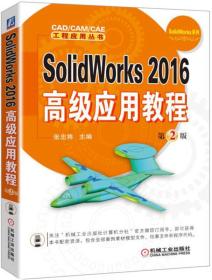
PackagingDesign:SuccessfulProductBrandingfromConcepttoShelf[包装设计:从实际到上架]
内页干净
¥ 188 3.3折 ¥ 563.7 八五品
仅1件
作者Marianne R. Klimchuk 著
出版社JohnWiley
出版时间2006-08
印刷时间2006-08
印次1
装帧精装
上书时间2024-11-21
- 在售商品 暂无
- 平均发货时间 9小时
- 好评率 暂无
- 最新上架
商品详情
- 品相描述:八五品
图书标准信息
- 作者 Marianne R. Klimchuk 著
- 出版社 JohnWiley
- 出版时间 2006-08
- ISBN 9780471720164
- 定价 563.70元
- 装帧 精装
- 页数 272页
- 正文语种 英语
- 【内容简介】
- How to create packaging designs for consumer brands that effectively communicate in the retail environmentPackaging Design: Successful Product Branding from Concept to Shelf is the most comprehensive resource of practical and professional information for creating packaging designs that serve as the marketing vehicles for consumer products. Packed with real–world advice, step–by–step descriptions of the creative process, and all–important insights into the stakeholders, the design process, and the production process, this book illuminates the business of packaging design like no other.Whether you′re a designer, brand manager, or packaging manufacturer, the highly visual coverage in Packaging Design will be useful to you, as well as everyone else involved in the packaging design process. In one convenient book, you′ll find:? Insightful images of the design process, design concepts, three–dimensional models, and prototypes? A wealth of case studies showcasing how superior packaging designs were created? A framework for today′s packaging design business? Environmental considerations, along with legal and regulatory issues? Useful appendices with advice on portfolio development and professional practice guidelines
- 【作者简介】
- MARIANNE ROSNER KLIMCHUK is Associate Chair of the Packaging Design Department at the Fashion Institute of Technology (FIT) in New York City. She's a frequent lecturer and contributor to industry magazines.SANDRA A. KRASOVEC is Assistant Professor of Packaging Design at FIT and principal of Krasovec Design in New York City.
- 【目录】
- Acknowledgments. Foreword. Preface. Chapter 1:燗ccounting For the Past. Developments through Emerging Societies. Capitalism through the Ages. History of Writing. Printing . The Beginnings of Visual Communication. Industrialization. Early Branding. Lithography. The New Economy. Twentieth-Century Developments. The Growth of the Packaging Design Business. Consumer Protection. Advancements in Packaging Design. Ending a Century. Design Today. Chapter 2:燚efining燩ackaging Design. Packaging Design as Communication. Packaging Design in the Marketing Mix. Reaching the Target Market. Proprietary Features. Packaging Design and the Brand. Brand Evolution. Brand Identity. Brand Promise. Brand Equity. Brand Loyalty. Brand Repositioning. Brand Extension. Packaging Design and Society. Packaging Design Objectives. Chapter 3:燭he Stakeholders. The Stakeholders in Packaging Design. Professional Roles. Checklist of What Every Designer Needs to Know. Strategic Services. Consumer Product Categories. Professional Profi les. Lisa Francella. Debbie Millman. Dean Lindsay. Adrienne Muken. Jason Lombardo. Carson Ahlman. Chapter?: Design燜undamentals. Basic Design Principles. Packaging Design Principles. The Primary Display Panel. The Well-Designed PDP. Chapter?: Typography. Typography and Packaging Design. Categories of Type. Typography and Technology. Typography and Kerning. Typographic Principles for Packaging Design. Designing the Brand Identity. Key Points about Typography. Chapter?: Communicating With燙olor. Basics of Color. Color Terminology. Color Distinguishes the Packaging Design. Color Associations Vary. Brand Building and Color. Owning Color in Packaging Design. Color Forecasting and Trends. Color on the Computer Screen. Packaging Design and Color in Retail. Key Points about Color. Chapter?: Communicating燱ith Imagery. Imagery and Cultural Perception. Effective Uses of Imagery. Illustration and Photography as Mediums for Imagery. Appetite Appeal. Cropping and Scaling Images. Instructional Illustration. Characters. Graphic Devices. Symbols and Icons. Violators. Key Points about Imagery. Chapter 8:燬tructures and燤aterials. Structures and Materials in Packaging Design. Paperboard. Corrugated Paperboard. Folding Cartons. Folding Carton Styles. Set-Up Boxes. Canisters. Other Paper and Paperboard Structures. Plastics. Blister Packs. Glass. Metal. Cans. Tubes. Flexible Packaging. Labels. Closures. Stock Packaging. Structural Design. Model Making. Rapid Prototyping. New Material Technologies. Key Points about Structures and Materials. Chapter 9: Planning for Production. Design Considerations for Materials and Production. Understanding Technology. File Management. Art Files: Image vs. Vector . File Naming. The Packaging Die. The Packaging Mechanical. File Delivery and Pre-Flight. Digital Work Flow. Color and Printing. Color Management. Printing Processes. Special Processes and Techniques. Production Follow-Through. Key Points about Production. Chapter 10:燭he燚esign Process. The Marketing Brief. Request for Proposals (RFP). The Design Proposal. Determining Fees. Agreement of Terms. Beginning the Assignment. Phase 1: Research and Analysis. Category Analysis. Product Analysis. Brand Name. Name Generation. Visual References or Swipes. Concept Boards. Phase 2: Preliminary Design. Beginning a Design Strategy. Brainstorming and Ideation Sessions. Concepts and Strategies. Sketching in Black and White. Logotype Development. Thumbnail Development. Initial Layouts. Visual Hierarchy. Design Reviews and Presentations. Phase 3: Design Development. General Guidelines for Net Weight or Product Contents. Comprehensives. Research. Phase 4: Final Design Refi nement. Billboard. Phase 5: Pre-Production and Digital Mechanicals. Production Checklist. Key Points about the Design Process. Chapter?1: Considering the燛nvironment. The Three Rs. Packaging and Life-Cycle Assessment. The LCA Process. Environmental Factors. Source Reduction. Waste Management. Creating Change. Key Points about the Environment. Chapter?2: Understanding燣egal營ssues. Understanding Legal Issues. Laws and Regulatory Agencies. Excerpts from the FDA Food Labeling Guide. FDA Additional Points. FDA Terminology. Intellectual Property Rights. Counterfeiting and Packaging Design. Key Points about Legal Issues. APPENDIX A: Creating a Folding Carton Comp. APPENDIX B: Packaging Design Portfolio. APPENDIX C: Professional Sources. Bibliography. Glossary. Index.
相关推荐
-

PACKAGINGDESIGN3【如图】
八五品重庆
¥ 38.00
-

PACKAGINGDESIGN4【如图】
八五品重庆
¥ 28.00
-
![PackagingDesign:SuccessfulProductBrandingfromConcepttoShelf [包装设计:从实际到上架]](https://www0.kfzimg.com/sw/kfz-cos/kfzimg/daeafdce/d466737dbabbdd76_s.jpg)
PackagingDesign:SuccessfulProductBrandingfromConcepttoShelf [包装设计:从实际到上架]
九品周口
¥ 420.00
-
![PackagingDesign:SuccessfulProductBrandingfromConcepttoShelf[包装设计:从实际到上架]](https://www0.kfzimg.com/sw/kfz-cos/kfzimg/20941666/28f9bdfdae5ae946_s.jpg)
PackagingDesign:SuccessfulProductBrandingfromConcepttoShelf[包装设计:从实际到上架]
九品北京
¥ 215.00
-

S
全新保定
¥ 26.40
-

S
全新保定
¥ 28.40
-

S
全新保定
¥ 56.40
-

S
全新保定
¥ 30.80
-

S
全新保定
¥ 51.70
-

S
全新保定
¥ 26.40
— 没有更多了 —
![PackagingDesign:SuccessfulProductBrandingfromConcepttoShelf[包装设计:从实际到上架]](https://www0.kfzimg.com/sw/kfz-cos/kfzimg/bcbcccaa/136f7aeb73683914_b.jpg)
![PackagingDesign:SuccessfulProductBrandingfromConcepttoShelf[包装设计:从实际到上架]](https://www0.kfzimg.com/sw/kfz-cos/kfzimg/afdebcef/bfdde9ed436fd061_b.jpg)
![PackagingDesign:SuccessfulProductBrandingfromConcepttoShelf[包装设计:从实际到上架]](https://www0.kfzimg.com/sw/kfz-cos/kfzimg/dbcbddba/5e03c6c7ddd1326f_b.jpg)
![PackagingDesign:SuccessfulProductBrandingfromConcepttoShelf[包装设计:从实际到上架]](https://www0.kfzimg.com/sw/kfz-cos/kfzimg/cddddadc/c12fc2b1dd53164f_b.jpg)
![PackagingDesign:SuccessfulProductBrandingfromConcepttoShelf[包装设计:从实际到上架]](https://www0.kfzimg.com/sw/kfz-cos/kfzimg/fcdbcddc/f25a7546739b3b22_b.jpg)
![PackagingDesign:SuccessfulProductBrandingfromConcepttoShelf[包装设计:从实际到上架]](https://www0.kfzimg.com/sw/kfz-cos/kfzimg/dabcfaba/ad44bf45be498f31_b.jpg)
![PackagingDesign:SuccessfulProductBrandingfromConcepttoShelf[包装设计:从实际到上架]](https://www0.kfzimg.com/sw/kfz-cos/kfzimg/ebfdfbeb/364c55af3ff4c2a2_b.jpg)
![PackagingDesign:SuccessfulProductBrandingfromConcepttoShelf[包装设计:从实际到上架]](https://www0.kfzimg.com/sw/kfz-cos/kfzimg/deddeaed/5481339dc7a7cf4c_b.jpg)
![PackagingDesign:SuccessfulProductBrandingfromConcepttoShelf[包装设计:从实际到上架]](https://www0.kfzimg.com/sw/kfz-cos/kfzimg/dcacbbde/296c9707195a187d_b.jpg)
![PackagingDesign:SuccessfulProductBrandingfromConcepttoShelf[包装设计:从实际到上架]](https://www0.kfzimg.com/sw/kfz-cos/kfzimg/fbccfeca/a74f989caed13e1c_b.jpg)










![PackagingDesign:SuccessfulProductBrandingfromConcepttoShelf[包装设计:从实际到上架]](/dist/img/error.jpg)





以下为对购买帮助不大的评价